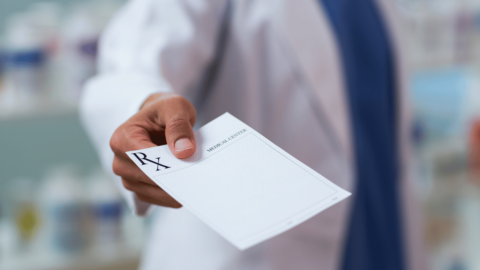If you or a loved one is dealing with opioid dependence, you may have heard of Suboxone as a tool for managing withdrawal and maintaining recovery. But what about emergency situations? In moments of crisis, emergency Suboxone can offer a lifeline to prevent withdrawal and reduce cravings, helping to stabilize individuals until they can get further help.
This article will explore what emergency Suboxone is, when and how it’s used, and what to expect. We’ll also discuss why having a plan for opioid-related emergencies can be essential in supporting recovery and keeping individuals safe.
What Is Suboxone?
Suboxone is a medication commonly prescribed to help individuals struggling with opioid dependence.
It contains two main ingredients:
- Buprenorphine: A partial opioid agonist, buprenorphine binds to opioid receptors in the brain but only partially activates them. This reduces cravings and withdrawal symptoms without creating the intense “high” associated with opioids.
- Naloxone: An opioid antagonist, naloxone blocks opioid receptors and is included to prevent misuse of the medication. When taken as prescribed, naloxone has no effect. However, if someone tries to inject Suboxone, naloxone can trigger withdrawal symptoms, reducing the risk of misuse.
Suboxone is used as part of a treatment known as Medication-Assisted Treatment (MAT), which combines medications with counseling and behavioral therapy to provide comprehensive support for opioid addiction recovery. Typically, Suboxone is taken daily to maintain stable levels in the body, but there are also cases when it’s used in emergencies.
What Is Emergency Suboxone, and When Is It Needed?
Emergency Suboxone refers to using the medication in urgent situations—usually when someone is experiencing, or at risk of experiencing, acute withdrawal symptoms from opioids.
Withdrawal can cause intense physical and emotional discomfort, and if not managed, it may increase the risk of relapse or unsafe opioid use.
Situations Where Emergency Suboxone May Be Needed
- Unexpected Withdrawal: If someone stops opioids suddenly or runs out of their usual medication, they may begin experiencing withdrawal symptoms. Emergency Suboxone can help alleviate these symptoms and prevent relapse.
- Loss of Access to Regular Medication: Sometimes, individuals in treatment lose access to their regular buprenorphine prescription, whether due to travel, lack of transportation, or other barriers.
- Accidental Overuse of Opioids: If someone has taken too much of an opioid but is not experiencing an overdose, a dose of Suboxone can sometimes help reduce the risk of further use and stabilize cravings.
- Note: Suboxone should not be used to treat opioid overdose—Naloxone alone (Narcan) is needed for that.
In these situations, using Suboxone in an emergency capacity can help individuals manage symptoms until they can get back to regular care or treatment.
How Does Emergency Suboxone Work?
When taken in emergency situations, Suboxone helps by reducing the severity of opioid withdrawal symptoms and minimizing cravings. This can make a big difference in helping someone avoid relapse and stay safe until they can connect with additional support.
Key Points to Know About Using Emergency Suboxone
- Timing Is Crucial: Suboxone should only be taken after opioids have left the body—usually when withdrawal symptoms have already started. If taken too soon after using opioids, Suboxone can trigger precipitated withdrawal (a sudden onset of intense withdrawal symptoms), as it displaces opioids from receptors.
- Dosage Matters: In emergencies, a healthcare provider will determine the right starting dose based on the individual’s current symptoms, opioid use history, and health status. A low starting dose is generally used to gauge response, with gradual increases as needed.
- Short-Term Stabilization: Emergency Suboxone is often used to stabilize someone temporarily, preventing withdrawal until they can access ongoing treatment. While effective, it’s generally a bridge to more comprehensive care rather than a stand-alone solution.
What to Expect When Taking Emergency Suboxone
If you’re taking Suboxone in an emergency situation, here’s what you can generally expect:
- Relief of Withdrawal Symptoms: Within 20–40 minutes, you may start to notice a reduction in withdrawal symptoms, such as nausea, sweating, muscle aches, and anxiety. Full effects typically peak after about 1–2 hours.
- Lowered Cravings: Suboxone helps reduce opioid cravings, which can provide a sense of calm and reduce the urge to use opioids again.
- Mild Side Effects: Some people experience side effects like headache, drowsiness, or mild nausea when starting Suboxone. These effects are generally manageable but should be reported to a healthcare provider if they persist.
Remember, Suboxone works best when taken as directed by a medical professional. If you’re experiencing any severe side effects or unusual symptoms, seek medical help.
Safety Tips for Using Emergency Suboxone
Emergency Suboxone use can be highly effective, but following safe practices is crucial to avoid complications. Here are a few tips:
1. Only Use Suboxone as Directed by a Medical Professional
While it can be tempting to self-administer Suboxone in a crisis, a healthcare provider should ideally guide dosing to avoid complications like precipitated withdrawal. QuickMD, for example, offers telehealth services where licensed providers can guide you in emergency situations.
2. Wait for Withdrawal Symptoms to Appear Before Taking
If opioids are still active in the body, taking Suboxone too early can cause intense and sudden withdrawal symptoms.
To avoid this, it’s generally recommended to wait at least 12–24 hours after using short-acting opioids (like heroin or oxycodone) and 24–48 hours for long-acting opioids (like methadone).
3. Be Aware of Potential Side Effects
While Suboxone is generally safe, side effects can include headaches, constipation, sweating, and fatigue. It’s best to contact a healthcare provider if these symptoms become severe. Telehealth services, such as QuickMD, can help you get support quickly.
Getting Access to Emergency Suboxone Through QuickMD
In an emergency situation, access to medical support can make a critical difference. QuickMD offers a convenient, reliable way to access Suboxone and other support services through telemedicine.
Here’s how QuickMD can help:
- Immediate Access: QuickMD’s telehealth platform allows you to connect with licensed providers who can assess your situation and guide you on safe Suboxone use.
- Personalized Care: QuickMD providers consider your unique health history, current symptoms, and risk factors when determining the right emergency treatment.
- Continued Support: After the emergency, QuickMD can help you transition to a more stable treatment plan, ensuring you have ongoing support to manage recovery.
FAQs About Emergency Suboxone
Can I Take Emergency Suboxone Without a Prescription?
No, Suboxone is a prescription medication and should only be taken under the guidance of a healthcare provider. Taking Suboxone without medical advice can lead to complications, including precipitated withdrawal.
How Soon Does Emergency Suboxone Start Working?
Suboxone usually begins to relieve symptoms within 20–40 minutes of the first dose, with full effects noticeable within 1–2 hours.
What Should I Do If Emergency Suboxone Isn’t Working?
If symptoms aren’t improving, consult your healthcare provider. It may be necessary to adjust the dose or explore alternative support options.
Final Thoughts: Using Suboxone as an Emergency Support Tool
Emergency Suboxone can offer crucial relief in opioid-related crises, helping to stabilize symptoms, reduce cravings, and prevent the risk of relapse. However, it’s most effective when used as part of a broader recovery plan that includes regular medical support and counseling. By connecting with a licensed provider through a service like QuickMD, you can ensure that emergency Suboxone use is safe and well-managed.
If you or someone you know may need emergency Suboxone or ongoing support, reach out to QuickMD’s online treatment team. Getting reliable, professional help in a crisis can make all the difference on the path to a safer, healthier future.




